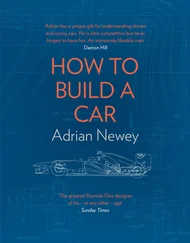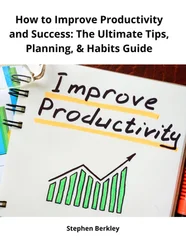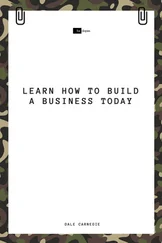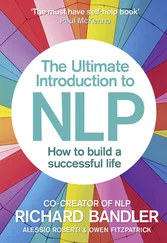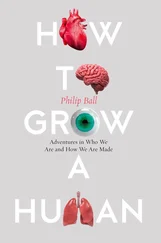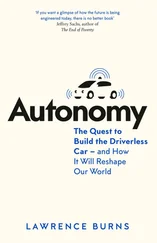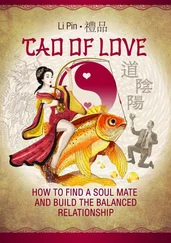Eyal, Nir - Hooked - How to Build Habit-Forming Products
Здесь есть возможность читать онлайн «Eyal, Nir - Hooked - How to Build Habit-Forming Products» весь текст электронной книги совершенно бесплатно (целиком полную версию без сокращений). В некоторых случаях можно слушать аудио, скачать через торрент в формате fb2 и присутствует краткое содержание. Год выпуска: 2014, Издательство: Nir Eyal, Жанр: Старинная литература, на английском языке. Описание произведения, (предисловие) а так же отзывы посетителей доступны на портале библиотеки ЛибКат.
- Название:Hooked: How to Build Habit-Forming Products
- Автор:
- Издательство:Nir Eyal
- Жанр:
- Год:2014
- ISBN:нет данных
- Рейтинг книги:5 / 5. Голосов: 1
-
Избранное:Добавить в избранное
- Отзывы:
-
Ваша оценка:
- 100
- 1
- 2
- 3
- 4
- 5
Hooked: How to Build Habit-Forming Products: краткое содержание, описание и аннотация
Предлагаем к чтению аннотацию, описание, краткое содержание или предисловие (зависит от того, что написал сам автор книги «Hooked: How to Build Habit-Forming Products»). Если вы не нашли необходимую информацию о книге — напишите в комментариях, мы постараемся отыскать её.
Hooked: How to Build Habit-Forming Products — читать онлайн бесплатно полную книгу (весь текст) целиком
Ниже представлен текст книги, разбитый по страницам. Система сохранения места последней прочитанной страницы, позволяет с удобством читать онлайн бесплатно книгу «Hooked: How to Build Habit-Forming Products», без необходимости каждый раз заново искать на чём Вы остановились. Поставьте закладку, и сможете в любой момент перейти на страницу, на которой закончили чтение.
Интервал:
Закладка:
This concept is meant to be a guiding theory and the scale of the illustration is intentionally left blank. Unfortunately for companies, research thus far has not found a universal timescale for turning all behaviors into habits. A 2010 study found that some habits can be formed in a matter of weeks while others can take more than five months. [xxxix]The researchers also found that the complexity of the behavior and how important the habit was to the person greatly affected how quickly the routine was formed.
There are few rules when it comes to answering “how frequent is frequent enough?” and the answer is likely specific to each business and behavior. However, as the previously mentioned flossing study demonstrates, we know that higher frequency is better.
Think of the products and services you would identify as habit-forming. Most of these are used daily, if not multiple times per day. Now, let’s explore why we use these products so frequently.
***
Vitamins vs. Painkillers
It’s never been easier to launch a new product or service, yet most new endeavors fail. Why? Products fail for a variety of reasons: Companies run out of funding, products enter markets too early or too late, the marketplace doesn’t need what companies are offering, or founders simply give up. Just as failure has many causes, success too can be attributed to a variety of factors. However, one thing is common to all successful innovations — they solve problems. That may seem obvious, but understanding the kind of problem a new product solves can be a topic of much debate.
“Are you building a vitamin or painkiller?” is a common, almost clichéd question many investors ask founders eager to cash their first venture capital check. The correct answer, from the perspective of most investors, is the latter: a painkiller. Likewise, innovators in companies big and small are constantly asked to prove their idea is important enough to merit the time and money needed to build it. Gatekeepers such as investors and managers want to invest in solving real problems — or, meeting immediate needs — by backing painkillers.
Painkillers solve an obvious need, relieving a specific pain and often have quantifiable markets. Think Tylenol, the brand name version of acetaminophen, and the product’s promise of reliable relief. It’s the kind of ready-made solution for which people are happy to pay.
In contrast, vitamins do not necessarily solve an obvious pain-point. Instead they appeal to users’ emotional rather than functional needs. When we take our multivitamin each morning, we don't really know if it is actually making us healthier. In fact, recent evidence shows taking multivitamins may actually be doing more harm than good. [xl]
But we don't really care, do we? Efficacy is not why we take vitamins. Taking a vitamin is a "check it off your list" behavior we measure in terms of psychological, rather than physical, relief. We feel satisfied that we are doing something good for our bodies — even if we can’t tell how much good it is actually doing us.
Unlike a painkiller, which we can not function without, missing a few days of vitamin popping, say while on vacation, is no big deal. So perhaps managers and investors know best? Perhaps building painkillers, not vitamins, is always the right strategy.
Not so fast.
Let’s consider a few of today’s hottest consumer technology companies — say Facebook, Twitter, Instagram, and Pinterest. What are they selling — vitamins or painkillers? Most people would guess vitamins, thinking users aren’t doing much of anything important other than perhaps seeking a quick boost of social validation. After all, think back to before you first started using these services. No one ever woke up in the middle of the night screaming, “I need something to help me update my status!”
But like so many innovations, we did not know we needed them until they became part of our everyday lives. Before making up your mind on the vitamin or painkiller debate for some of the world’s most successful tech companies, consider this idea: A habit is when not doing an action causes a bit of pain.
It is important to clarify that the term “pain,” as it is frequently used in business school and marketing books, is somewhat hyperbolic. In reality, the experience we are talking about is more similar to an “itch,” a feeling that manifests within the mind and causes discomfort until it is satisfied. The habit-forming products we use are simply there to provide some sort of relief. Using a technology or product to scratch the itch provides faster satisfaction than ignoring it. Once we come to depend on a tool, nothing else will do.
My answer to the vitamin or painkiller question is that habit-forming technologies are both. These services seem, at first, to be offering nice-to-have vitamins, but once the habit is established, they provide an ongoing pain remedy.
Seeking pleasure and avoiding pain are two key motivators in all species. When we feel discomfort, we seek to escape the uncomfortable sensation. In the next chapter, we will explore how emotions, often negative ones, trigger users to reach for solutions. But for now, the important thing to remember is that habit-forming products create associations in users’ minds — and that the solution to their pain may be found in your product’s use.
We’ll discuss the morality of manipulation in chapter eight; however, it is worth noting that although some people use the terms interchangeably, habits are not the same things as addictions. Addictions are persistent, compulsive dependencies on a behavior or substance. Addictions, by definition, are self-destructive. Thus, it is irresponsible to make products that rely on creating and maintaining user addiction, since doing so would mean intentionally harming people.
A habit, on the other hand, is a behavior that can have a positive influence on a person’s life. Habits can be healthy or unhealthy, and you likely have several helpful habits you carry out throughout your day. Did you brush your teeth today? Take a shower? Did you express gratitude by saying “thanks?” Or in my case, say “Good morning” while on an evening jog? These are common behaviors done with little or no deliberation — they are habits.
***
Diving Into The Hook Model
Ready to learn more about creating positive user habits? Read on to gain a deeper understanding of the Hook Model: A simple yet powerful way to help your customers form habits that connect their problem with your solution.
In the next chapters, we dive into each phase of the Hook Model. Along the way, I will provide examples you can use in the design of your own product or service. By learning a few fundamentals of how the mind works, you will increase your odds of building the right product faster.
By progressing users through the four steps of the Hook Model, — trigger, action, variable reward, and investment — hooks form habits.
***
Remember and Share
- For some businesses, forming habits is a critical component to success, but not every business requires habitual user engagement.
- When successful, forming strong user habits can have several business benefits including: higher customer lifetime value, greater pricing flexibility, supercharged growth, and a sharper competitive edge.
- Habits can not form outside the “Habit Zone,” where the behavior occurs with enough frequency and perceived utility.
- Habit-forming products often start as nice-to-haves (vitamins) but once the habit is formed, they become must-haves (painkillers).
- Habit-forming products alleviate users’ pain by relieving a pronounced itch.
- Designing habit-forming products is a form of manipulation. Product builders would benefit from a bit of introspection before attempting to hook users to make sure they are building healthy habits, not unhealthy addictions (more to come on this topic in chapter eight).
Читать дальшеИнтервал:
Закладка:
Похожие книги на «Hooked: How to Build Habit-Forming Products»
Представляем Вашему вниманию похожие книги на «Hooked: How to Build Habit-Forming Products» списком для выбора. Мы отобрали схожую по названию и смыслу литературу в надежде предоставить читателям больше вариантов отыскать новые, интересные, ещё непрочитанные произведения.
Обсуждение, отзывы о книге «Hooked: How to Build Habit-Forming Products» и просто собственные мнения читателей. Оставьте ваши комментарии, напишите, что Вы думаете о произведении, его смысле или главных героях. Укажите что конкретно понравилось, а что нет, и почему Вы так считаете.


